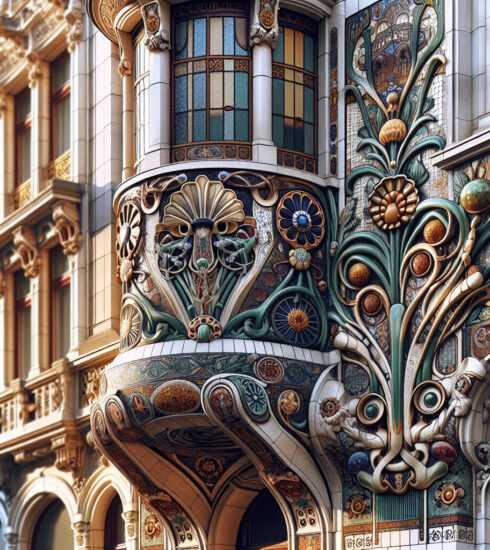Embark on a Belgian Surrealism Odyssey: Beyond the Canvas
Belgium: A Canvas of Unseen Surrealist Dimensions
Belgium, a vibrant hub of culture and history, is often associated with Gothic architecture, hearty dishes of chocolate and beer, and, most notably, the exploration of surrealism in art. While the nation boasts renowned surrealist icons like René Magritte, there exists an unseen journey through Belgium’s surrealist dimensions that beckons both art lovers and curious travelers alike.
The Surrealist Movement in Belgium
The surrealist movement, emerging in the early 20th century, aimed to unlock the power of the imagination by drawing on the subconscious, dreams, and fantasies. In Belgium, this movement found a fertile ground, with artists drawing inspiration from their unique societal landscapes and rich histories.
A Brief History
As a concept, surrealism was birthed by André Breton in France, but it quickly found its echoes across Europe. Belgium’s role can’t be understated, as it provided a unique backdrop for this avant-garde exploration. Alain Robbe-Grillet, a notable Belgian writer, once quipped about Belgium’s fascinating dualities, a reflection pertinent to the depth of its surrealist art.
René Magritte: A Key Icon
René Magritte remains an icon when discussing surrealism. Known for juxtaposing ordinary objects in an extraordinary context, his works invite viewers to question perceptions, leaving a lasting impression on the canvas of Belgian art. One can explore his legacy deeply in Brussels’ Magritte Museum, a place that forms an essential part of Belgium’s surrealist journey.

Paul Delvaux and Other Pioneers
Another pioneer, Paul Delvaux, evoked a more dream-like and emotive form of surrealism in his works. Through his depictions of nudes and classical architecture, Delvaux offered viewers a quiet, mysterious narrative, enticing them into introspection. Belgium’s nurtured these pioneers, fostering environments like La Louvière, which encourages contemporary surrealist art forms today.
Exploring Unseen Surrealist Dimensions
Beyond the Canvas: Journey Through Belgium’s Unseen Surrealist Dimensions offers an intricate labyrinth where enthusiasts and travelers can dive into hidden, profound facets of surrealist creation beyond mainstream recognition. Here’s a closer look at what awaits on this journey:
Surrealism in Regional Hubs
- Brussels: Beyond the Magritte Museum, Brussels hosts numerous galleries and events, celebrating surrealism through temporary exhibits and annual festivals.
- Antwerp: Known for fashion, Antwerp also surprises with avant-garde art and surrealist artwork scattered across lesser-known galleries.
- Charleroi: Once an industrial powerhouse, this city is now reinventing its cultural identity through contemporary surrealist art-driven initiatives.
Cultural and Historical Influences
Historical affluence, shifting cultures, wars, and folklore embed themselves within the surrealist art of this region. The friction between Wallonia and Flanders, for instance, manifests in themes of duality — evident in both its literature and artwork.

An Immersive Belgian Experience
Delving into Belgium’s surrealism isn’t merely confined to static views of art. The nation invites you to partake in diverse experiences that expand the narrative beyond galleries and museums.
Art Installations and Festivals
The Bozar Center for Fine Arts in Brussels hosts some of the finest cross-genre exhibits and art installations, fostering a dialogue between past surrealism and modern-day interpretations. Additionally, annual festivals like the Surrealist Movement Festival invite participation from global artists to explore and redefine the movement’s dynamics.
Interactive Workshops and Tours
Numerous art workshops allow participants to engage hands-on in crafting surrealist pieces, understanding the foundational techniques and psychological layers behind them. Guided tours across Bruges, Leuven, and smaller towns unlock unheard stories and inspirations behind Belgium’s surrealist heritage.
Alternative Surrealist Spaces
- La Louvière: Known as a creative hive, the atmosphere pulsates with aesthetic extravagance and hosts yearly art events to explore surrealist themes.
- Ghent’s Graffiti Lane: Although not traditionally surrealist, this locale embodies the evolving and dynamic nature of surrealist vision interpreted through street art.

A Broader Cultural Canvas
The surrealist journey through Belgium intricately weaves with its wider artistic culture, drawing from diverse sources and influencing contemporary forms.
Musical Inspiration and Performances
Surrealism’s reach in Belgium does not halt at visual arts. Enhanced by its musical scene, festivals like Tomorrowland evoke the same dreamlike, sometimes escapist, ethos seen in surrealist paintings, curating environments alive with creativity.
Literature and Poetry
Belgium’s literature has played a significant role in developing surrealist narrative structure and characters. Authors like Amélie Nothomb and poetic works craft surrealist prose and poems that reflect intricate cultural themes and internal landscapes.
Conclusion: The Future of Surrealism in Belgium
As we look toward future horizons, the journey through Belgium’s surrealist dimensions remains ongoing and evolving. Artists and cultural proponents continuously strive to redefine, challenge, and explore beyond the boundaries of today’s reality, ensuring Belgium’s position in global contemporary art.
Join us in this boundary-pushing exploration of Belgium’s unseen surrealist dimensions, where art, history, and culture intertwine seamlessly. For a more in-depth understanding of Belgium’s artistic ground, explore our article on Belgium’s avant-garde movements, and learn from our detailed insights into Belgium’s cultural heritage.






